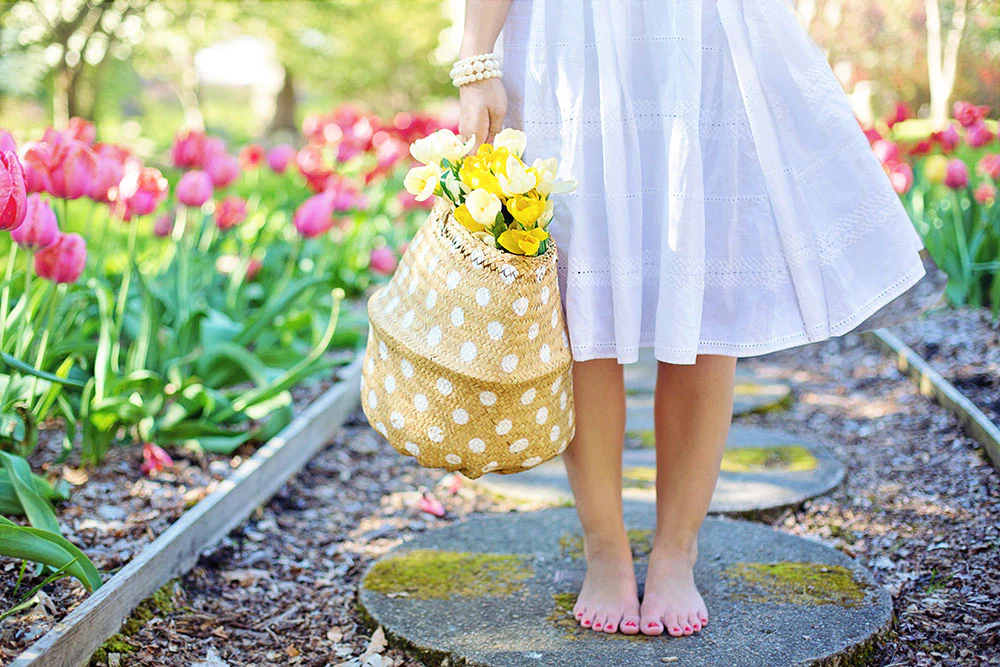How Does Your Garden Grow?

Keeping your garden green in the summertime offers unique challenges. So consider a few things this year:
How Much Garden Do You Want?
Before planting, think about how much time you want to invest in your garden. Some plants are much lower maintenance than others, advises Gregory Birch, owner of Gardens of Bacchus. For easy care, he recommends Coreopsis (Tickseed) and Hostas.
Will Children or Pets Have Access?
So many plants are toxic if ingested. “Milkweed is a somewhat trendy plant right now because Monarch Butterfly caterpillars ONLY eat it but it contains toxic sap,” said Birch.

Where Is Your Garden?
“The most important thing to consider is the plant’s preferences,” said Elle Meager, founder of the website, Outdoor Happens. “A plant that prefers a subtropical climate won’t thrive in a temperate climate.” You can look at the USDA zoning map and find out which climate and zone you are in, Then try to find suitable plants for your area.
How Much Sun Does Your Garden Get?
The amount of sun your garden receives is crucial to getting the results. “Look at where the sun comes from and where it sets,” said Meager. “The side where the sun sets has the hottest afternoon sun. This side needs tough, sun-loving plants.” She suggests growing shade lovers like mint and philodendron in the other areas.
How Often Should You Water?
In general, watering depends on several factors, but two or three a week is good for most gardens. Full sun areas will dry out more quickly as do raised beds or planters.
Meager suggests watering in the morning when water has time to soak in or run off before nightfall. “Watering late in the day can cause fungal and bacterial issues,” she said. “It’s best to water deeply every few days than water lightly every day” since frequent watering won’t encourage root spread and results in weaker, less resilient plants.
Consider, too, if your area frequently experience summer droughts, there are plants that handle these conditions better than others. Catmint (Nepeta), for example, is not only drought tolerant, but also low maintenance and non-toxic, according to Birch.
“Part of developing your green thumb is learning to “read” your plants,” said Birch. “If your plants start to droop, they look faded, and the soil is dry as a bone every time - they probably need more water. “
When Is the Best Time to Weed?
There’s no set time to do this, but with weeding, an ounce of prevention is worth a pound of cure — so plan on spending 15-20 minutes at least once a week. “It’s easy to stay ahead of weeds if you just pick out the young ones as they pop up,” said Birch. “It’s truly amazing how fast weeds grow. If you ignore them for just a couple of weeks, you’ll find yourself with a Herculean task and more will just keep popping up.”

How Do I Design My Garden?
To create a compelling garden bed, you need to consider color, texture, and plant shape and size. With color, look for plants that will contrast and compliment each other. “Many Loropetalums have really nice purple leaves,” suggests Birch. “Purple Heart Plants also have rich purple foliage. Plant them together and those two similar purples aren’t going to do anything to elevate each other. It’ll look like a big mass of purple. But if you plant either of them with a White Hosta, that purple is going to shine.”
Texture
Texture refers to the way that the foliage “reads” in the landscape. “Carex Grass has long grass-like leaves that create cascading lines in the garden,” said Birch. “Barberries have short rounded leaves that create a completely different texture in the landscape. Combining different foliage textures will make each plant stand out more.”
Shape
Shape is the general growth habit of the plant and how that will impact the overall look. Mix and match different shapes in your garden to increase visual variety. Don’t be random with your selection. Instead, find plants that complement each other’s color, shape and texture. You want to also relegate taller plants to the back.
Size
Consider the plant’s eventual size, too. “We helped someone remove a giant Fig tree a few years ago, which was planted too close to the house,” she said. The Fig pushed up walkways around the house and worked its roots into the foundations and cost thousands of dollars to remove.
“Don’t get discouraged if your garden doesn’t meet your expectations at first,” said Birch. “Gardening is a skill like anything else. Improve on your garden bed every year and over time you’ll be amazed at what you’ve accomplished.”
Share
Get on the list
Sign up for our newsletter and we’ll keep you up to date on the latest news and exclusive offers!

Leave a Comment